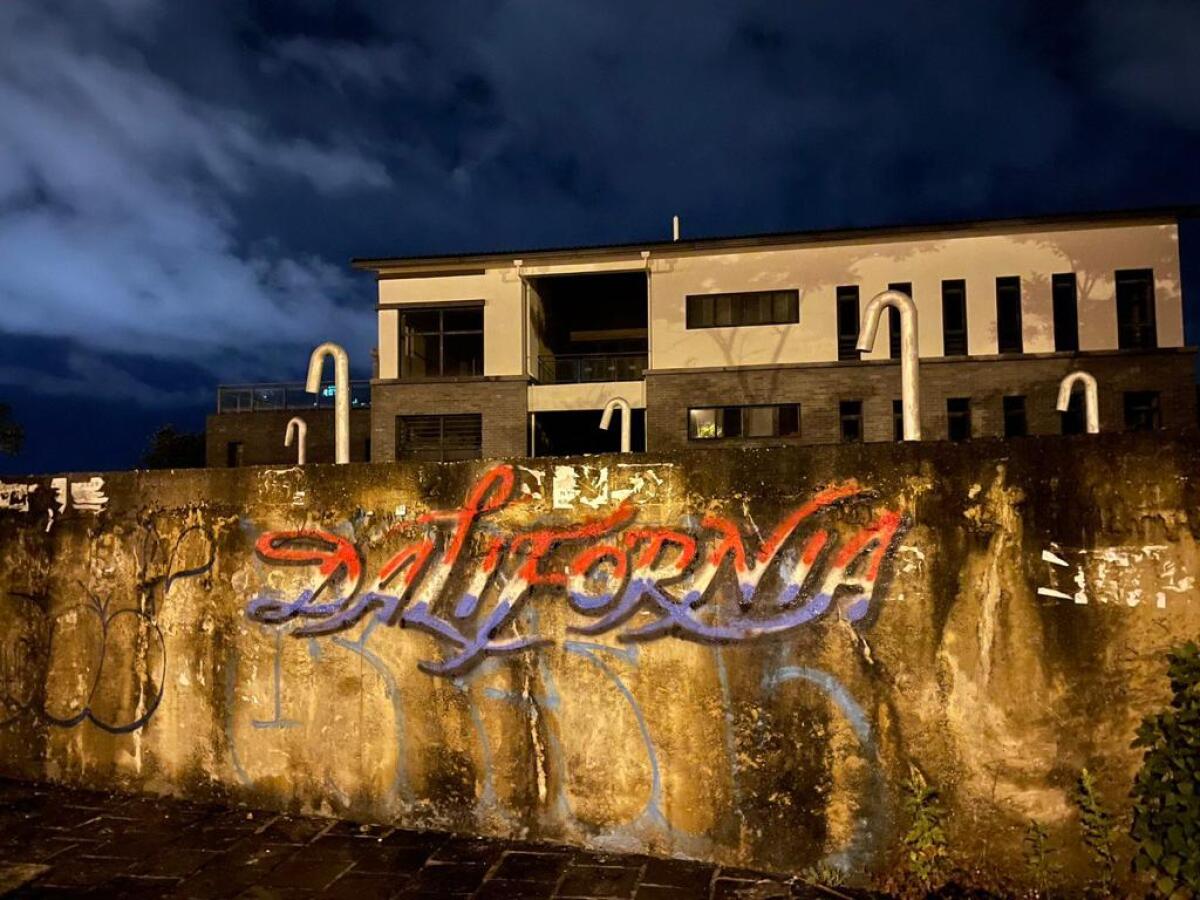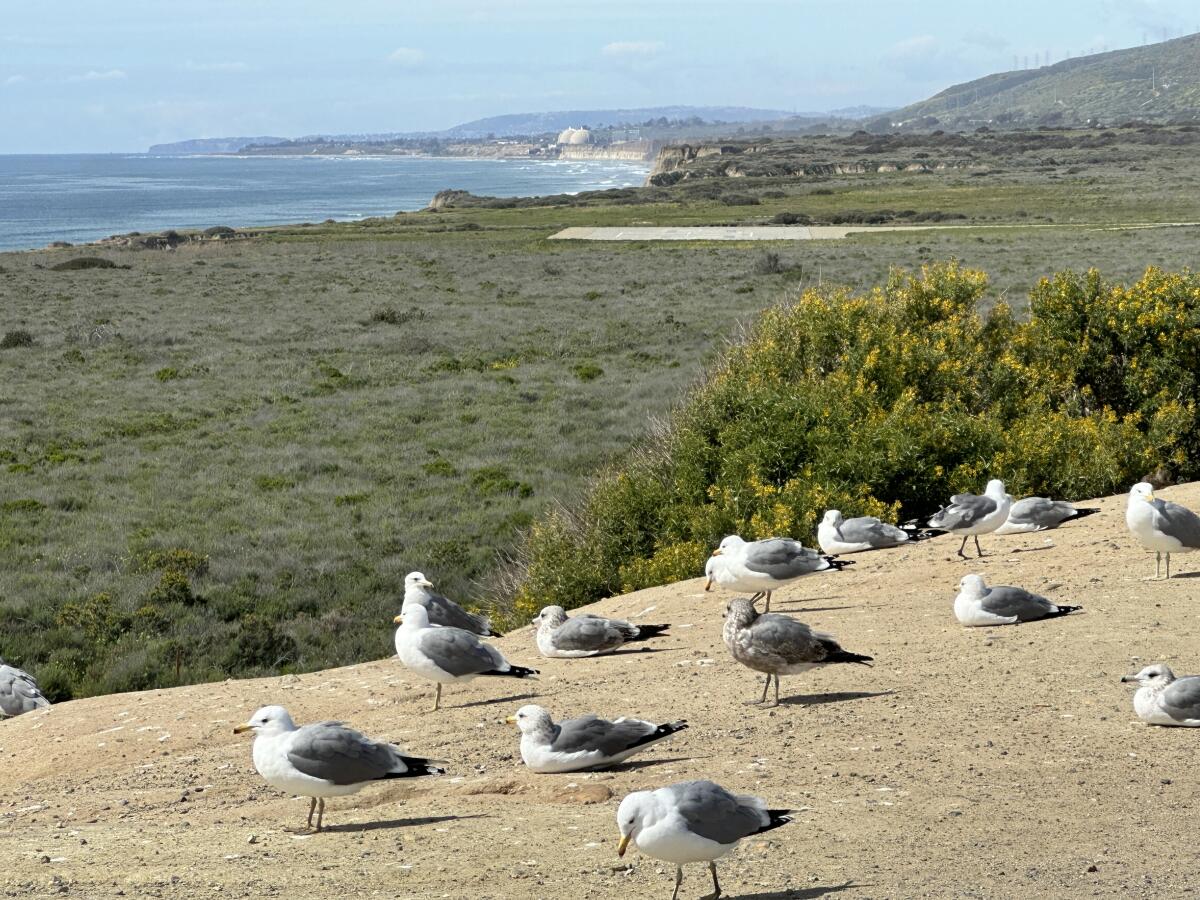Is this the year California OKs speed cameras?

- Share via
Good morning, and welcome to the Essential California newsletter. It’s Tuesday, May 16.
There’s a common factor in many traffic collisions, one that plays a vital role in how severe or deadly a crash ends up: speed.
It’s basic physics: The faster we drive, the more force we create. Driving faster limits our field of vision and our response time — and means it takes longer to come to a full stop. That compounds the odds that hitting a person who is walking, biking or otherwise not traveling in a vehicle will result in severe or fatal injuries.
An average of more than 3,800 people per year were killed in California traffic collisions from 2018 to 2022. A growing share of those deaths has been pedestrians and bicyclists who are struck by a car.
California is not unique. Traffic deaths have surged across the U.S. in recent years. But dozens of cities have responded with a technology that has successfully reduced speeding.
Automated speed enforcement programs, a.k.a. speed cameras, have been used in other states as an effective tool to curb dangerous driver behavior and, by extension, serious and fatal crashes.
There’s a new effort to try out the technology in a handful of California cities, though the state bill — now on its third iteration in as many years — is in jeopardy (again).
What the bill would do
In its latest iteration, Assembly Bill 645 would establish a five-year pilot program in six cities — San Jose, Oakland, Los Angeles, Glendale, Long Beach and San Francisco — to allow speed cameras on select corridors:
- School zones
- City streets with the highest incidences of fatal and severe injury crashes, designated as “safety corridors”
- Streets with a history of races and side shows
The bill mandates that the cameras capture solely rear license plates on vehicles going more than 11 miles per hour over the speed limit. It also prohibits the use of facial recognition technology and requires each city to develop a “racial and economic equity impact analysis” in collaboration with community stakeholders to ensure that speed cameras are not disproportionately installed in low-income neighborhoods.
Tickets would start at $50 for vehicles traveling between 11 and 15 mph over the posted speed limit, then increase with a driver’s measured speed. Low-income residents would have the option of reduced fees or community service in lieu of the fine.
The money generated through camera programs could be used only to sustain the program or to fund street safety upgrades in the areas where cameras are placed.
An uncertain fate
Damian Kevitt, executive director of the nonprofit Streets Are for Everyone, has been advocating for speed cameras for years. He and a coalition of safety advocates, community leaders and family members who’ve lost loved ones to reckless speeding crashes gathered Monday at Assembly Speaker Anthony Rendon’s district office in Lakewood, calling on the leader to move AB 645 forward for a vote on the Assembly floor. They also delivered a report analyzing dangerous speeding in several school zones across the state, along with some 2,000 petition signatures in favor of AB 645.
Right now, the bill is sitting in the Assembly Appropriations Committee’s suspense file. If Assemblymember Chris Holden (D-Pasadena) does not move it to the Assembly floor by Friday (a key legislative deadline), it will die in the committee, which is what happened in previous years.
Kevitt said there have been “reasons that are given on paper” for why the legislation didn’t make it but is concerned that there might be undisclosed motives that are never shared outside the Appropriations Committee, which he called a “democratic black hole.”
All the while, traffic violence continues to affect communities across the state. In Los Angeles, 312 people died in traffic collisions last year — the highest annual toll in at least 20 years.
“Enough is enough,” Kevitt said. “This is a tool that can be used to save lives — and should be used to save lives.”
Assemblymember Laura Friedman (D-Glendale), who co-authored AB 645, wonders why the bill goes to the Appropriations Committee at all.
“This is an opt-in from cities, and they’re bearing the cost of the program, not the state,” Friedman told me, adding:
“We have a waiting list of cities wanting to get in on this, because they feel that this is a tool that will address speed racing [and] really egregious reckless driving — and they know that their law enforcement just can’t be everywhere at once. They’re asking: ‘Let us try this, let us see if this makes a difference.’”
A spokesperson from Rendon’s office said he “does not comment on bills that have not yet reached the Assembly floor,” adding that Rendon has received the group’s report “and will look at it.”
Holden was not available for comment.
An ‘effective and reliable technology’ with a history of opposition
In New York City, speed cameras were added to some school zones beginning in 2014. In the following years through December 2021, speeding on those corridors fell an average of 73%. The city expanded the program in 2022 to run cameras 24/7 rather than during the previously limited school hours.
A speed-camera pilot program on one dangerous street in Philadelphia resulted in 30% fewer crashes there compared with the citywide average and 50% fewer traffic deaths.
The Federal Highway Administration calls speed cameras “an effective and reliable technology to supplement more traditional methods of enforcement, engineering measures and education to alter the social norms of speeding.”
Some also see cameras as a way to remove bias from traffic enforcement, as the technology can catch and cite drivers based solely on vehicle speed. The ACLU and other civil liberties groups have opposed this and previous versions of the bill, citing concerns about privacy. The latest version of the bill aims to address those concerns by requiring cities to destroy all photographic evidence “that does not contain evidence of a speeding violation ... within five business days.”
But privacy isn’t the only concern: Some residents worry that speed cameras could become a cash cow for cities, though the bill’s authors aim to address that with the restrictions on how money collected through the program can be spent.
Some law enforcement groups have voiced opposition, arguing in part that speed cameras would make some of their traffic enforcement work obsolete and threaten their jobs.
Friedman doesn’t buy that argument.
“Certainly there’s a lot for law enforcement to do,” she said. “There’s no shortage of very important work. ... I see this as something to supplement their efforts, not to replace them.”
So what are the bill’s chances this year? Friedman worries that “somebody is opposing this bill and back-channeling opposition,” though she’s not sure who.
“I wish that they would come and talk directly to me, because we have been spending now four years trying to address every legitimate concern that’s been raised about this bill,” she said. “I think it’s in a really good place, and I’m hoping that this is the year.”
Passage of the bill would be the first step. It’s when citations start dropping that we’d see results from this sort of program — meaning drivers are slowing down, which would make streets safer for everyone.
Maybe you’re reading this and are worried about being ticketed, should the bill pass. There’s a simple solution to avoid that: Slow down.
“This is not a speed trap,” Kevitt said, adding:
“Signs are up. You know you are entering ... a school zone, where it’s going to fairly ticket you if you’re not traveling at safe speeds. And if you’re traveling at safe speeds, you’re fine. It causes that behavior modification, which is all that we’re trying to do.”
And now, here’s what’s happening across California.
Note: Some of the sites we link to may limit the number of stories you can access without subscribing.
L.A. STORIES
Gloria Molina has a lot of firsts in her political legacy: the first Latina Assembly member in California, the first Latina on the Los Angeles City Council, the first Latina on the L.A. County Board of Supervisors. Molina, 74, died Sunday night after a three-year battle with cancer. Los Angeles Times

Can you imagine L.A. without the expertise and unmatched hustle of its landscapers? My colleague Julissa James has a photo-rich ode to the vital workforce, writing: “Their bodies of work are all around — we are inside a live group exhibition created and cared for by workers who walk among us.” Los Angeles Times
POLITICS AND GOVERNMENT
With California’s population falling as its stock of new housing rises, when will we see homes become more affordable? Analysts say it’s complicated and advise hopeful homeowners against holding their breath. CalMatters
Oakland teachers’ seven-day strike ended Monday after their union reached a tentative agreement with the school district. The deal secures major pay raises for teachers, along with improved investments in classrooms. KQED
CRIME, COURTS AND POLICING
“SeaWorld’s greed and arrogance are offensive, and [San Diego] will hold it accountable.” So said City Atty. Mara Elliott, announcing the city’s intention to sue the theme park to recoup almost $10 million in back rent officials say was not paid during the pandemic. San Diego Union-Tribune
Support our journalism
HEALTH AND THE ENVIRONMENT
If you have young children or grandchildren, you might want to check this list. Dangerous levels of lead have been found in the drinking water of nearly 1,700 licensed child-care centers in California, according to data procured by the nonprofit Environmental Working Group. Sacramento Bee
An environmental group is suing the state to block oil drilling at 15 recently approved wells off the coast of Long Beach. The Center for Biological Diversity argues that the California Geologic Energy Management Division failed to facilitate public comment and based the approvals on outdated environmental reviews. Long Beach Post
CALIFORNIA CULTURE
Some say California is a state of mind — and that mindset is alive and well on the other side of the world. In China, digital nomads have been flocking to Dali, a city in the southwestern part of the country. Its inviting climate and anything-goes reputation have led some to rebrand it “Dalifornia.” But will it last? Los Angeles Times

California’s winter storms brought strong erosion around Sierra Nevada rivers — and now it’s bringing out the gold diggers. “Flood gold” — fine flakes of the precious metal kicked up with all that churning water — has beckoned modern-day prospectors back to some of the state’s historic Gold Rush sites. Mercury News
Free online games
Get our free daily crossword puzzle, sudoku, word search and arcade games in our new game center at latimes.com/games.
AND FINALLY
Today’s California landmark is from Michelle Barth of Waikoloa, Hawaii: the scenic coastline near Camp Pendleton.

Michelle writes:
I love the view up the coast from Pendleton area lookout. I grew up in Palos Verdes and still visit Cali often.
What are California’s essential landmarks? Fill out this form to send us your photos of a special spot in California — natural or human-made. Tell us why it’s interesting and what makes it a symbol of life in the Golden State. Please be sure to include only photos taken directly by you. Your submission could be featured in a future edition of the newsletter.
Please let us know what we can do to make this newsletter more useful to you. Send comments to essentialcalifornia@latimes.com.
Sign up for Essential California
The most important California stories and recommendations in your inbox every morning.
You may occasionally receive promotional content from the Los Angeles Times.







